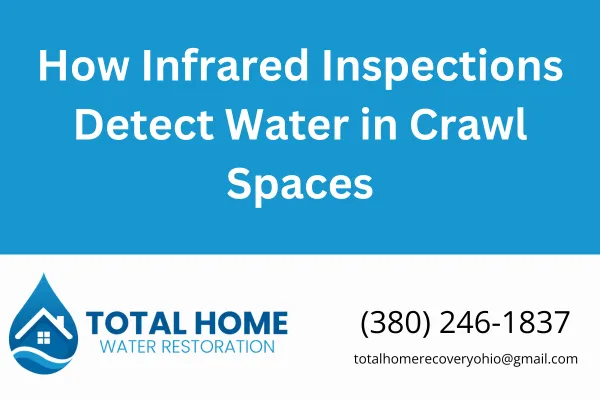
How Infrared Inspections Detect Water in Crawl Spaces
If your home has a crawl space, you probably don’t think about it until there’s a problem. But when water starts pooling down there—or even worse, mold starts growing—it can lead to serious damage fast.
At Total Home Water Restoration, we’ve seen it all. And one of the best tools we use to catch crawl space water damage early is infrared inspection.
Why Infrared Matters in Crawl Spaces
Crawl spaces are tight, dark, and usually unfinished. That makes it hard to spot water issues until they've already caused wood rot, musty smells, or mold.
That’s where thermal imaging comes in.
Infrared cameras pick up heat patterns that the naked eye can’t see. When there's water in wood, insulation, or soil, the temperature changes. Infrared inspections show these patterns as color differences on a screen—kind of like a heat map of your crawl space.
What We Can Find with Infrared
Here’s what we typically uncover during an infrared crawl space inspection:
Hidden water leaks from plumbing lines or HVAC condensation
Groundwater intrusion from poor drainage or grading
Wet insulation or framing that can lead to mold growth
Temperature gaps that point to ventilation or air sealing issues
And because it’s non-invasive, we don’t have to tear anything out to spot the problem.
What Happens Next
If we find moisture with infrared, we’ll back it up with a moisture meter and visual inspection. From there, we’ll lay out exactly what needs to be done—whether it’s water extraction, mold remediation, or structural drying.
We follow IICRC S500 standards for water damage and S520 for mold remediation, so you know it’s done right the first time.
Common Crawl Space Warning Signs
You might need an infrared crawl space inspection if you notice:
Musty odors indoors
Uneven flooring or soft spots
High humidity or condensation in the home
A recent pipe leak or storm
Serving Grove City and All Nearby Areas
We help homeowners across Grove City, Columbus, Hilliard, Galloway, Dublin, Westerville, and surrounding areas find and fix water issues where it counts—before it spreads.
Need a crawl space inspection? Call us today at 380-246-1837 and ask for Tyler.
FAQs
Q: Is infrared better than a visual inspection?
Yes. Infrared helps us see behind walls and insulation where moisture may be hiding. It's especially useful in hard-to-reach crawl spaces.
Q: Can you use infrared to find mold?
Infrared doesn’t detect mold directly, but it helps us find the moisture mold needs to grow. We use it as part of a full mold assessment.
Q: How long does an infrared inspection take?
Usually 30–60 minutes, depending on crawl space size and access.
